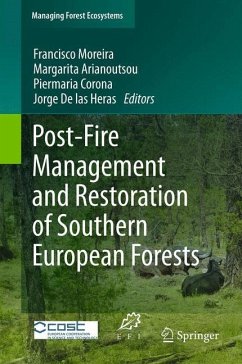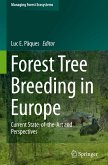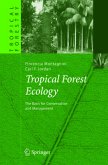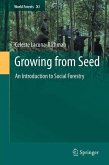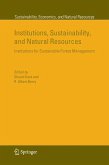In spite of all the efforts made in fire prevention and suppression, every year about 45 000 forest fires occur in Europe, burning ca. 0.5 million hectares of forests and other rural lands. The management of these burned forests has been given much less attention than fire prevention or fire suppression issues, but the post-fire management of burned areas raises strong concerns (economic and social impacts, soil erosion and water quality, biodiversity loss, forest restoration). Although there are a few publications which address post-fire management, the focus of these has been either on general approaches to restoration or specific topics such as preventing post-fire soil erosion. This book is about the post-fire management of fire-prone forest types in southern Europe. It provides the first comprehensive overview of the topic, ranging from stand-level to landscape-level management, and from emergency actions to long-term restoration approaches.
The book is divided into 2 major sections. The first includes five chapters where transversal topics such as recent changes in fire regimes in Southern Europe, the economic, legal and social aspects of post-fire management, fire hazard and flammability of different forest types, and post-fire management approaches, are addressed. The second section is divided in seven chapters, with a similar structure, each one dealing with the forest types more affected by wildfires in Europe (and other fire prone habitats such as shrublands),.
The book is targeted to an audience of professionals (forest managers, landscape planners, and forest agency staff), graduate students and researchers. It is the first publication to access in comprehensive way post-fire management issues in European forests, for which only fragmented knowledge through specialized or grey literature was available so far.
Hinweis: Dieser Artikel kann nur an eine deutsche Lieferadresse ausgeliefert werden.
The book is divided into 2 major sections. The first includes five chapters where transversal topics such as recent changes in fire regimes in Southern Europe, the economic, legal and social aspects of post-fire management, fire hazard and flammability of different forest types, and post-fire management approaches, are addressed. The second section is divided in seven chapters, with a similar structure, each one dealing with the forest types more affected by wildfires in Europe (and other fire prone habitats such as shrublands),.
The book is targeted to an audience of professionals (forest managers, landscape planners, and forest agency staff), graduate students and researchers. It is the first publication to access in comprehensive way post-fire management issues in European forests, for which only fragmented knowledge through specialized or grey literature was available so far.
Hinweis: Dieser Artikel kann nur an eine deutsche Lieferadresse ausgeliefert werden.
From the reviews: "The book disseminates scientific knowledge on post-fire management and restoration of forests mainly to a target audience of professionals (forest managers, landscape planners, forest agency staff and policy makers), graduate students and researchers. The contents are presented with technical language but understandable even to non-specialized readers. ... this is a mandatory book for all those involved in restoration related to forest fires from stand to landscape-level planning, and ... whose contents will be valid and taken into account for a long period of time." (Daniel Moya Navarro, International Forestry Review, Vol. 14 (1), 2012)

